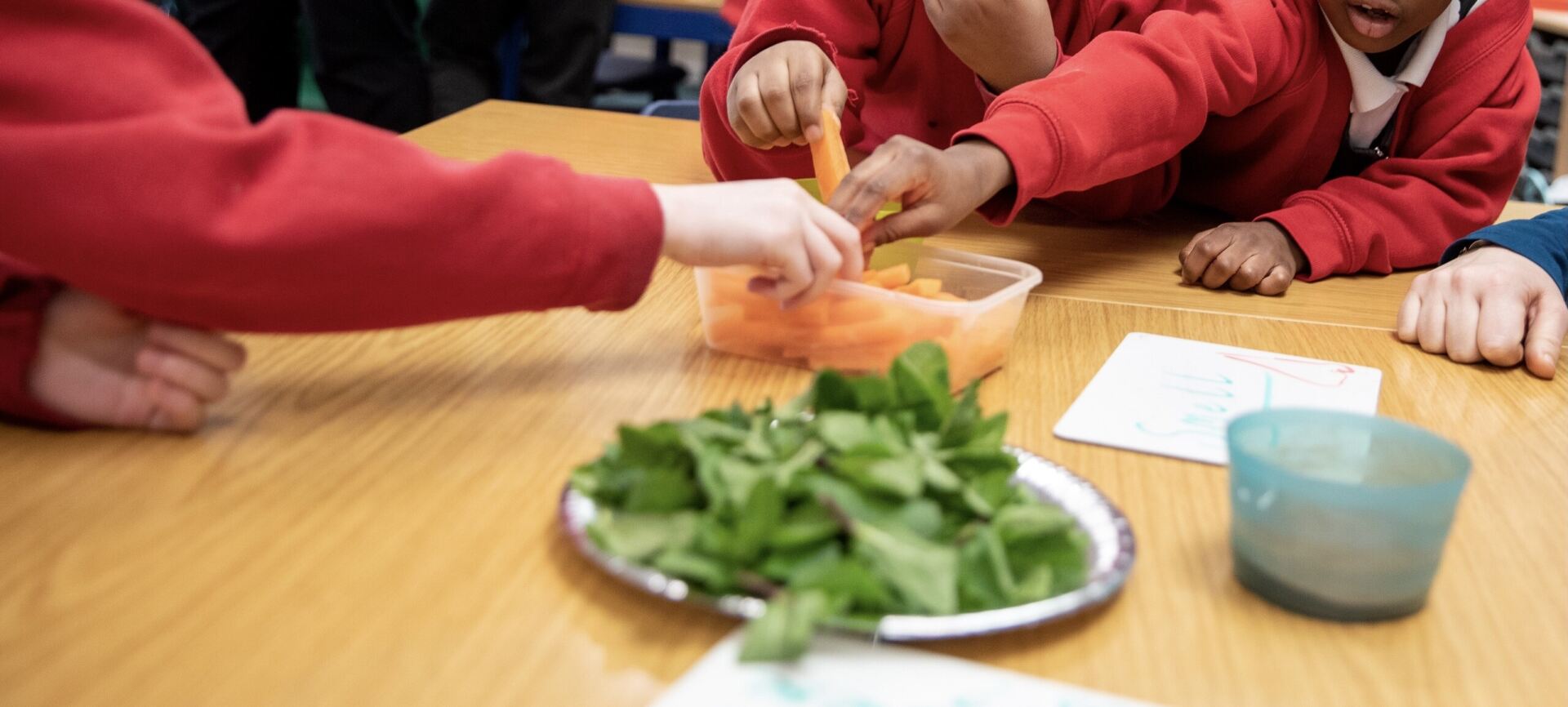Sensory food education
Contents
- What is sensory food education?
- Why do we need sensory food education?
- What are the principles of sensory food education?
- Impact of sensory food education
- Advice for early years practitioners
- Food safety
- Further reading
Get insights on how sensory food education can help young children engage with food, and benefit them in early years (EY) settings.

By TastEd
TastEd works with EY settings and primary schools, training practitioners in delivering sensory food education. TastEd - based on the Sapere method used in Finland and Sweden - gives children opportunities to explore food, using their senses, to help them learn to love eating vegetables and fruit, for life.
TastEd’s sensory food education activities support the Early Years Foundation Stage Statutory Framework and Development Matters guidance and can be used in any EY setting.
What is sensory food education?
This hands-on approach teaches children how to use all 5 senses (sight, smell, touch, hear, taste) to explore food and their own personal food preferences. It captures children’s curiosity and gives them the opportunity to discover new foods which they may not have tried at home. Learning through play helps build familiarity and can lead to an increased acceptance of new foods. Sometimes a child may have tried a food at home and disliked it, but can find that the food becomes more appealing in a new setting, surrounded by friends and trusted adults.
Why do we need sensory food education?
According to the Food Foundation, the number of children eating little or no vegetables has increased in the last 10 years. Nearly a third of primary children eat less than one portion of vegetables a day. Research shows that if children enjoy eating healthy foods, they are more likely to eat them for life. Sensory food education can help address this, as evidence suggests it can increase children’s willingness to try new foods.
What are the principles of sensory food education?
Sensory food education takes place away from mealtimes, with a trusted adult and peers. Asking children open-ended questions, such as ‘what does celery sound like?’ captures children’s innate curiosity and enables them to feel free to explore foods.
TastEd specifically uses 2 golden rules to empower children:
- no one has to try
- no one has to like
This removes expectations and pressure to eat the foods, meaning children are more likely to try and potentially enjoy what’s on offer.
Impact of sensory food education
Feedback from practitioners suggests that sensory food education has many broad benefits for children, including:
- offering a simple, practical approach to healthy eating that actually changes children’s food choices
- aiding speech and language development
- encouraging children to try an increased diversity of fresh foods
- promoting a greater understanding of the world
- helping children to understand their likes and dislikes and respect those of others
- enriching vocabulary
- increasing self-confidence
Sensory food education also has benefits for practitioners, as it:
- offers fun activities to learn about food
- requires minimal equipment
- can be run using small amounts of fruit and vegetables
- connects well to activities such as gardening, cooking, books, and art
Advice for early years practitioners
Helping children broaden their food preferences and develop confidence in eating a healthy diet can be challenging. Here are some tips for practitioners.
To support children’s sensory food education experience, you should:
- use the golden rules (‘no one has to try’ and ‘no one has to like’) as the basis for food experiences
- play simple sensory games, such as the what’s in the socks game, to engage even the most reluctant child
- get parents involved by telling them the foods their child explored and let them know if any preferences have changed as a result (for example ‘your child tried radishes today and actually liked them’)
You can teach children about how to use their senses to explore food by:
- modelling how to explore the food - such as sniffing foods, before trying them
- ensuring a child knows they don’t have to try the foods, but can use their other senses instead (licking is fine too!)
- using open questions so children can share their thoughts and discoveries, for example: ‘What do you notice?’, ‘How is it the same as…?’, ‘What does it remind you of?’
Food safety
It’s important to keep food safety in mind. You should ensure food for tasting is served in sizes and shapes appropriate for the child. You should also check for any allergies or intolerances before starting an activity. You can learn more about food safety and choking prevention in our food safety article.
Further reading
Find simple, fun activities for your EY setting - TastEd
Learn more about how sensory food education is used around the world - Sapere